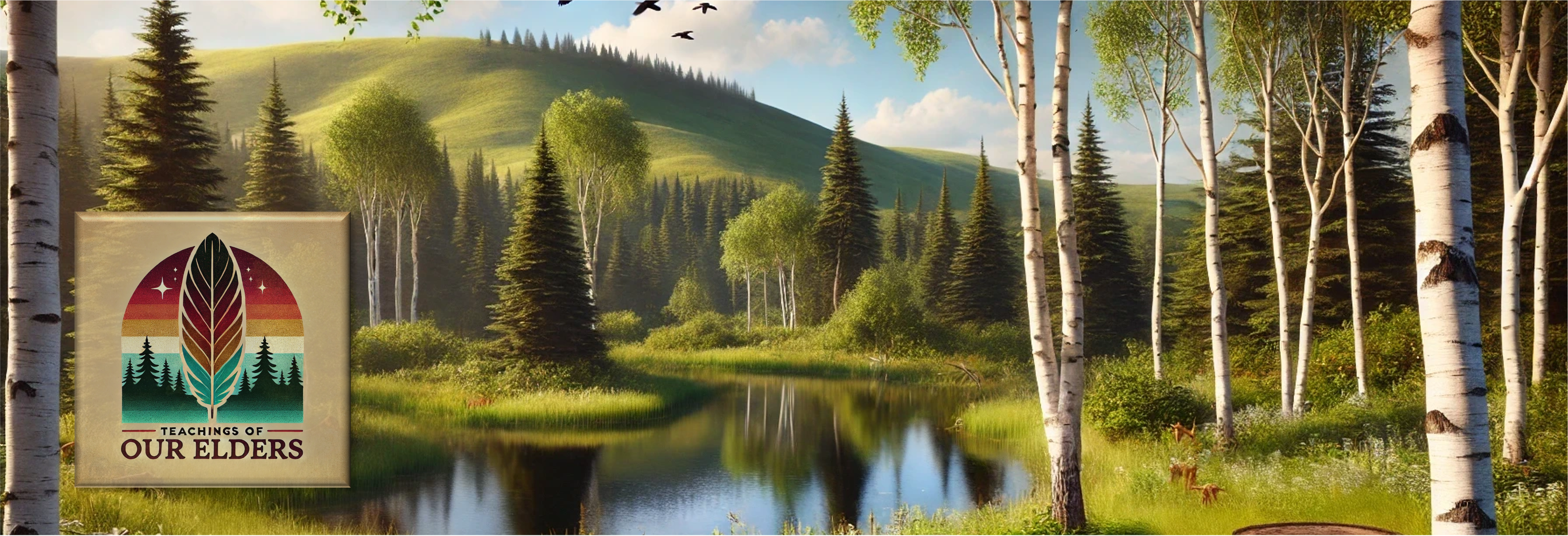| Inquiry Design Model (IDM) Blueprint™ |
| Who Am I? |
| NDNAEU 2 “Learning & Storytelling”, NDNAEU 7 “Native Identity” |
| Compelling Question | Where did I come from? Who came before me? Who helps me go further? |
| Standards and Practices | Write narratives to develop real or imagined experiences or events using effective technique, relevant descriptive details, and well-structured event sequences. 3-12.W.3 Engage and orient the reader by establishing a context and point of view and introducing a narrator and/or characters; organize an event sequence that unfolds naturally and logically. 3-12.W.3a Use narrative techniques, such as dialogue, pacing, and description, to develop experiences, events, and/or characters. 3-12.W.3b Use a variety of transition words, phrases, and clauses to convey sequence and signal shifts from one time frame or setting to another. 3-12.W.3b Use precise words and phrases, relevant descriptive details, and sensory language to capture the action and convey experiences and events. 3-12.W.3d Provide a conclusion that follows from and reflects on the narrated experiences or events. 3-12.W.3e Based on grade level, the expectations for complexity of the Summative assessment and extensions will increase. |
| Staging the Question | Around any of the major holidays, have a class discussion on what the families do to celebrate, foods they eat, the family they see. Then, move the discussion to focus on the memories they have. |
| Supporting Question 1 | Supporting Question 2 | Supporting Question 3 |
| What do you know about your ancestry? Discuss/point out how some students know their ancestry further than others. Encourage students to have their family complete the tree. | Whom outside your immediate family is important to your as a mentor or guide? 1.Class brainstorm a list of people outside the traditional family who are important to them as mentors/guides. 2.Teacher shares a story from his/her past. | What stories are important to you and the people you consider to be family? Let students share stories – encourage students to have more than one. Discuss how stories from our past shows our personality |
| Formative Performance Task | Formative Performance Task | Formative Performance Task |
| 1.Choose and run off a basic family tree shape to fill in 2.Have students complete the basic family tree. 3.After discussion, add the other influential people to the tree – retitle the tree to Memory Tree. | 1. Discuss the videos and the role of others in our lives. Guide the discussion to Grandmother’s story. 2.Have students create a brief writing of a story from one of the people on their Memory Tree | Grade-specific expectations for writing types are defined in standards 1-3. |
| Featured Sources | Featured Sources | Featured Sources |
| 1. Use a Google image search for “family tree;” such as https://goo.gl/cOkU49 2. Have students discuss their families. Guide discussion to “family trees.” 3. Discuss people outside their families who influence them. | 1. Watch the Kathryn Froelich video “The Value of Kinship” https://teachingsofourelders.org/essential-understanding-1b-kathrynfroelich/ 2. Watch the Kathryn Froelich video “The Story of Coyote & Fox” https://teachingsofourelders.org/story-coyote-fox-kathryn-froelich/ | Online information on writing a memoir: http://www.rd.com/advice/greattips-on-how-to-write-your-memoir/ http://www.rd.com/advice/greattips-on-how-to-write-your-memoir/ |
| SUMMATIVE PERFORMANCE TASK: Supported Claim (written/spoken) or Demonstration of Process (project-based) | Create a memoir of themselves which incorporates family, mentors, and a story drawn from the Memory Tree to show a feature of their personality. |
| SUMMATIVE PERFORMANCE TASK: Extension | Have students use the information to create a presentation/poster/short story. Use the same process and have students interview a parent/grandparent/mentor (record the interview and include it in the final product) |
| Taking Informed Action / Real World Application | Digital technology can be utilized to document a student’s family and stories for future usage. |

